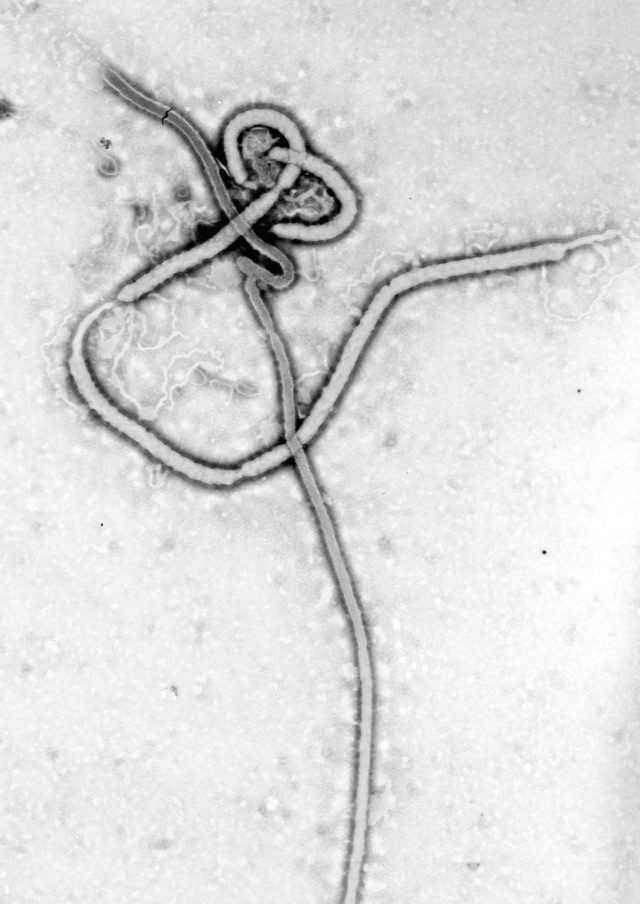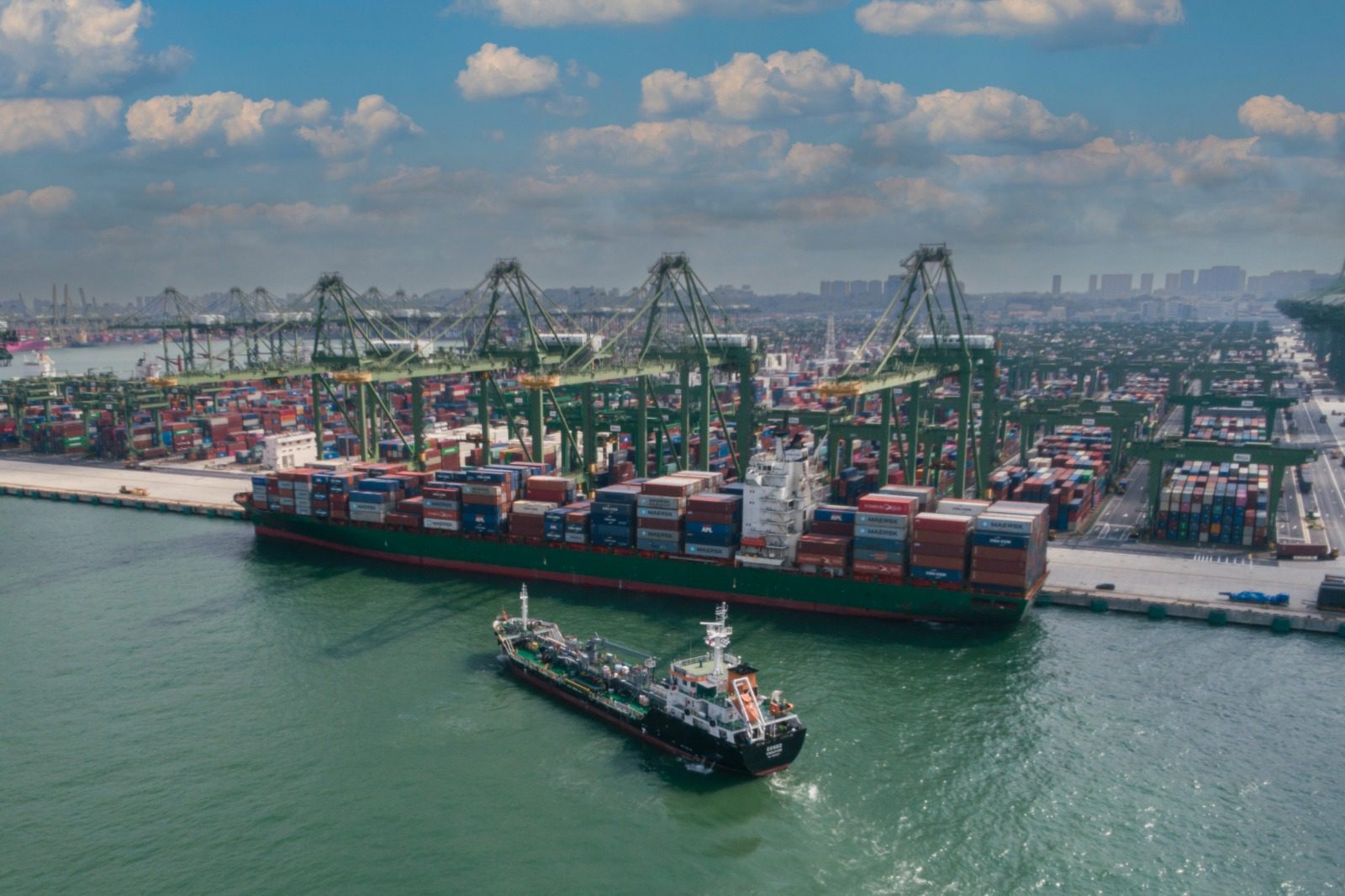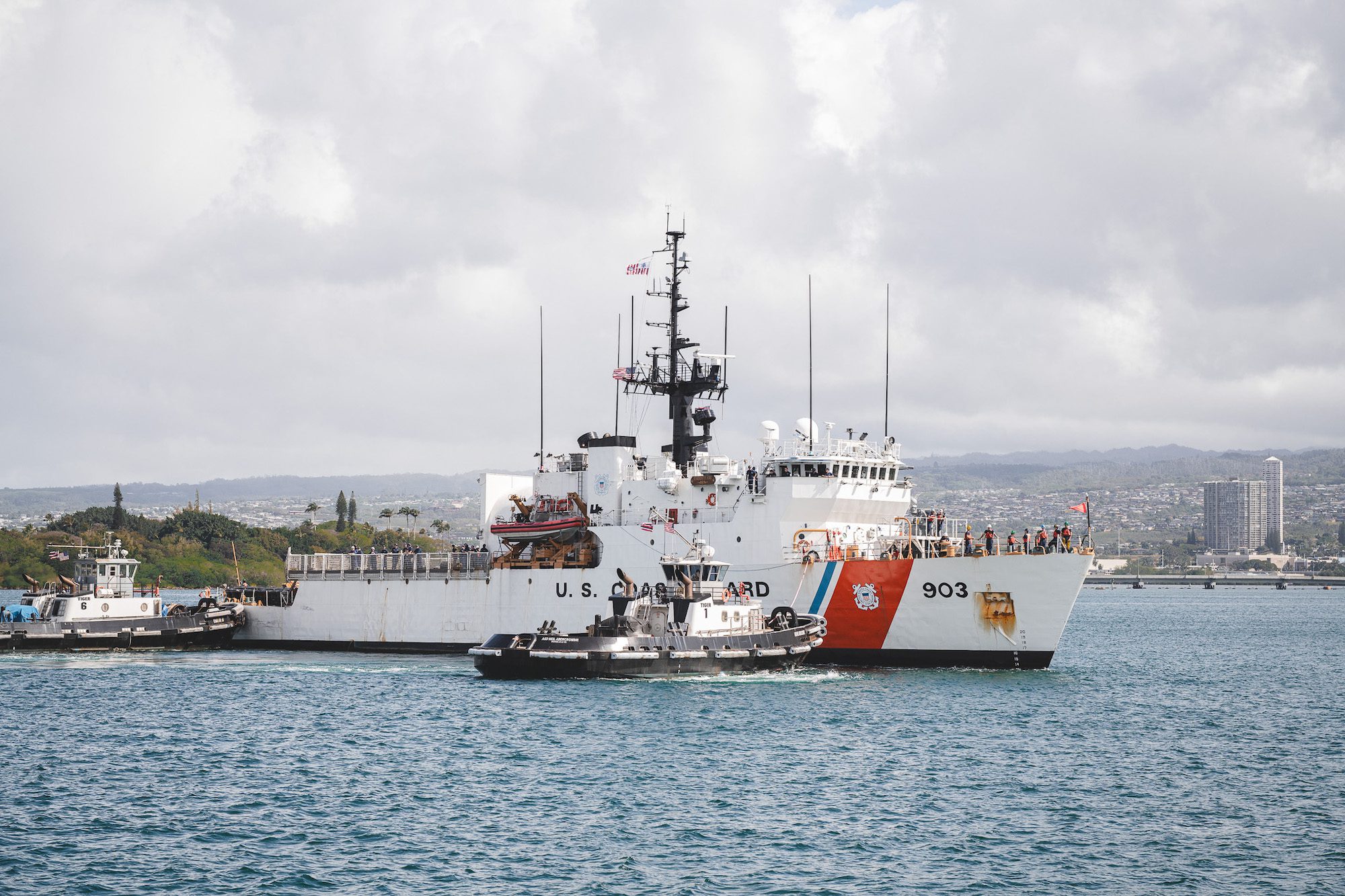Ebola virus under an electron micrograph, via CDC/ Dr. Frederick A. Murphy
If your ship intends to call in ports affected by the Ebola virus, here are some important safety measures via the World Health Organization and the Marshall Islands Maritime Administrator that should be implemented:
In the event of a seafarer presenting symptoms compatible with Ebola Virus Disease (EVD) (fever, weakness, muscle pain, headache, sore throat, vomiting, diarrhea, bleeding) on board a vessel. The following precautions should be applied:
1) Keep his/her cabin doors closed, if not placed in a medical isolation room on board.
2) Provide information about the risk of Ebola transmission to persons who will take care of the seafarer or enter the isolation area.
3) A log listing all people entering the cabin should be maintained.
4) Anyone who enters the cabin to provide care to the person in isolation or to clean the cabin should wear personal protective equipment (PPE) with:
- A surgical protection mask; and eye protection or a face shield;
- Non-sterile examination gloves or surgical gloves; and
- Disposable impermeable gown to cover clothing and exposed skin. A waterproof apron should be worn over a non-impermeable gown or when coming in close contact with the person in isolation.
5) Before exiting the isolation the PPE should be removed in such a way as to avoid contact with the soiled items and any area of the face.
6) Limit the movement and transport of the seafarer from the cabin for essential purposes only. If transport is necessary, the seafarer should wear a surgical mask.
7) Clean and disinfect spills without spraying or creating aerosol. Used linen, cloths, eating utensils, laundry and any other item in contact with a seafarer’s body fluids should be collected separately and disinfected in such a way as to avoid any creation of aerosol or any contact with persons or contamination of the environment. An effective disinfectant is a dilution of sodium hypochlorite (bleach) at 0.05 or 500 parts per million (ppm) available chlorine, with a recommended contact time of 30 minutes.
8) All waste produced in the isolation cabin should be handled according to the protocol of the ship for clinical waste. If an incinerator is available on board, then waste should be incinerated. If waste needs to be delivered ashore, then special precautions are needed and the port authority should be informed before waste delivery.
9) Start case investigation immediately. Protective equipment is not required when interviewing asymptomatic individuals, when a distance of one (1) meter is maintained.
10) Close contacts should be identified and asked to do passive self-monitoring of temperature (e.g. monitoring temperature only if feeling feverish) and symptoms or active self-monitoring (e.g. by regular temperature measurement twice a day for 21 days).
11) In the event of a suspected diagnosis of EVD on a vessel, immediate expert medical opinion should be sought and the event should be reported as soon as possible to the next port of call by the Captain.
12) The seafarer should disembark in such a way as to avoid any contact with healthy crew members and wearing a surgical mask. Personnel in contact with the seafarer during the medical evacuation should wear a surgical protection mask and PPE.
13) The competent authority at port may need to arrange, depending on the situation, medical evacuation or special arrangements for disembarkation and hospitalization of the seafarer and laboratory diagnosis. Crew members who have been identified through contact tracing should be assessed for their specific level of exposure. Passive self-monitoring of temperature (e.g. monitoring temperature only if feeling feverish) and symptoms or active self-monitoring (e.g. by regular temperature measurement twice a day) for those at higher risk level should be continued for 21 days.
14) At the request of a governmental port health authority, vessel operators should also facilitate obtaining, from some or all crew members, their contact details (should they need to be contacted) when there is a particular reason to believe they may have been exposed to infection on board the vessel. Additionally, countries may consider requiring arriving vessels to complete and deliver the Maritime Declaration of Health (IHR Annex 8). Measures taken on board should also be noted on the IHR Ship sanitation control certificate (IHR Annex 3).
15) In addition to the above information from the WHO, limited and/or restricted access to vessels should be enforced. Under the Convention of Safety of Life at Sea (SOLAS), necessary steps may be taken in order to ensure the safety of a vessel and its crew members:
How to Prevent Getting Ebola
1) Agents and Charterers should be advised that the vessel will refuse entry to anyone appearing ill.
2) Owners are to request Charterers to advise Shippers accordingly of this and all other steps. Shippers are to ensure that stevedores have current medicals if this is the owner’s preference. The crew should be detailed at the base of the gangway using a remote infrared thermometer to scan each person before they board, and refuse boarding for anyone who is showing signs of fever (see CDC guidelines attached – although this is no guarantee that the person is a carrier since the incubation period is up to 21 days).
3) Access to accommodations by stevedores should to be strictly limited. They should only go as far as the vessel’s office, which should be washed down each time with bleach by the crew while wearing protective suits.
4) If stevedores use other spaces, such as the head or crane cabins, then likewise they should be required to clean after themselves each watch while supervised by the crew who should keep a log.
5) On boarding at the base of the gangway, stevedores should wash their hands with soap and water, or alcohol hand sanitizer. If practical, a basin with sanitizer or bleach should be used for shoes. This should be repeated at every shift change.
6)It is preferable that the stevedores not bring food with them on board, if it is possible to take their meals ashore. If not, and there is food available on board, it should be served with disposable cups, plates and plastic forks or spoons, then disposed of in a refuse drum by the stevedores.
7) The crew should be supplied with new, sealed facemasks, nitrile or latex gloves and Tyvek suits which should be used once per watch and discarded into drums that have been set aside for this purpose, as well as paper plates, cups and utensils for meals.
8) The drums containing all rags, cleaning gear, food items and disposed protective items should be removed by the crew using the stores crane and landed to the stevedores on departure of the vessel.
9) Any additional measures deemed necessary may be taken for the protection of the officers and crew.
Please also visit the Center for Disease Control (CDC) website for additional information on the Ebola Virus (please note the CDC refers to it as Ebola Hemorrhagic Fever):
Signs and symptoms
EVD is a severe acute viral illness often characterized by the sudden onset of fever, intense weakness, muscle pain, headache and sore throat. This is followed by vomiting, diarrhoea, rash, impaired kidney and liver function, and in some cases, both internal and external bleeding. Laboratory findings include low white blood cell and platelet counts and elevated liver enzymes.
People are infectious as long as their blood and secretions contain the virus. Ebola virus was isolated from semen 61 days after onset of illness in a man who was infected in a laboratory.
The incubation period, that is, the time interval from infection with the virus to onset of symptoms, is 2 to 21 days.
Specific advice for ships calling at ports in the affected countries:
i. Guinea – All ports are functioning normally and the local authorities have not introduced any special clearances for vessels entering the port
ii. Liberia – It is now mandatory for any persons entering port areas to wear protective masks and gloves and to carry hand sanitizer. All ports are functioning normally and the local authorities have not introduced any special clearances for vessels entering the port
iii. Sierra Leone – Freetown port is functioning normally and the local authorities have not introduced any special clearance for vessels entering the port
iv. Senegal – All vessels planning to enter Senegal from a country in which Ebola is prevalent, must make a declaration to the local authorities 24 hours before the ship’s arrival.
v. Nigeria – As the result of currently developing events, vessels planning on entering any Nigerian ports should contact the local ship’s agent beforehand to determine if any special clearances have been introduced.
After a vessel has called at a port in one of the high risk countries, the Master should be prepared for potential delays at future ports while the authorities inspect the vessel and investigate the circumstances of the previous port of call with the crew. It has been suggested the Master should prepare a list of when and where the crew joined the ship for presentation to the authorities including details of whether or not any crew went ashore in a high risk area.
Vessels calling at ports in these affected countries should ensure the ship’s security plan is correctly implemented and the crew should be extra vigilant for any stowaways trying to board the ship. It is strongly recommended that additional searches are carried out before departing the port and a 24 hour security watch is maintained while in port. Specific instructions should be given to watchmen to only allow on board people required for the vessel’s business, such as stevedores and officials.
If a stowaway were to successfully board the vessel from one of the above mentioned countries, this will not only increase the risk and threat of Ebola to the crew onboard, but there will be increasing reluctance for other countries to accept such stowaways who have boarded within any of these high risk countries, making disembarking them from the vessel increasingly difficult.
Links to helpful websites
Unlock Exclusive Insights Today!
Join the gCaptain Club for curated content, insider opinions, and vibrant community discussions.

 Join The Club
Join The Club













